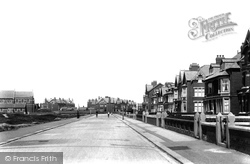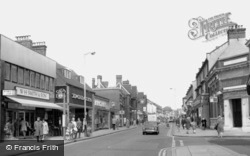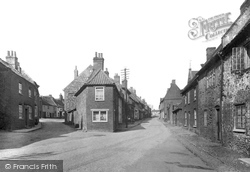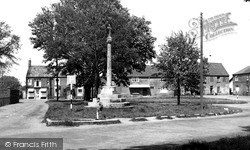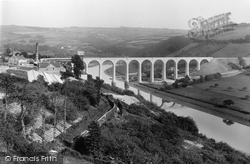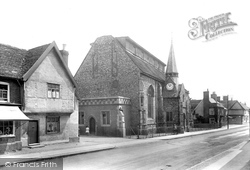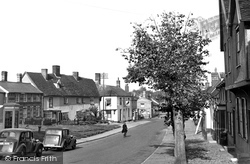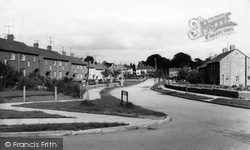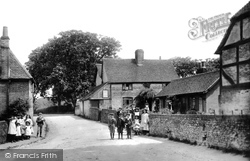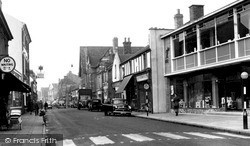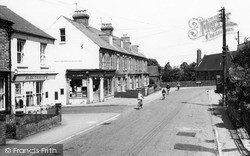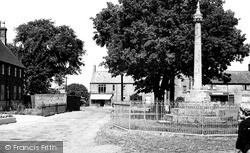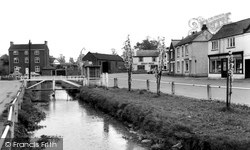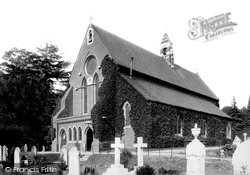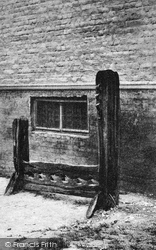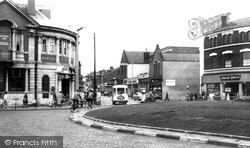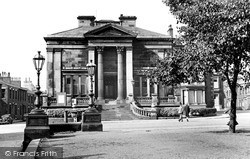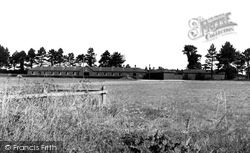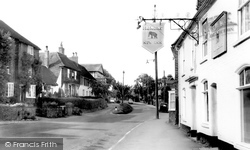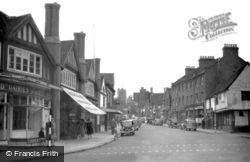Captions
388 captions found. Showing results 281 to 300.
The buildings were all good quality brick with stone cappings and gate posts.
On the left the taller Victorian brick buildings were demolished in the 1970s and replaced by bland flat roofed ones.
There are early 17th-century buildings here, which have been considerably altered over the centuries; these have had brick façades built over their front walls.
To the south, across the Sleaford to Skegness Road, an alley leads to Lord Cromwell's College just beyond the road frontage buildings; it is another 15th-century brick building, known as the Old College
The chimney of a fire brick works stands out in Calstock, and there is evidence of market gardening in the foreground.
Beyond is Pillar House, a timber-framed building with a Victorian brick façade.
The brick building (centre) was Carter's cycle shop, and beyond it was Wells' the electrician.
Looking down New Street to the Moot Hall, we can see on the right a brick Georgian house where many BBC trainees lodged in the 1960s.
Fifteen children have been neatly assembled by the photographer in front of the brick and half-timbered cottages that comprised this small village – it was originally called Clandon Abbots.
Further down, past a wool shop, is the large brick-built Kettering Conservative Club, built on a site donated by the Duke of Buccleuch in 1876.
Church Street and the roads off to the left are part of a grid of Victorian brick, terraced, straight streets.
The railings have gone, as have the brick wall and the trees behind it.
To the right of the photograph is a row of uninteresting 19th/20th-century houses; to the left, and of an earlier era, is a three-story, three-bay brick farmhouse, so common in Leicestershire villages.
This modest building of red brick is attributed to T H Rushworth and was built in about 1864.
A four-hour period in the stocks was the usual reward for misdemeanours such as blasphemy, drunkenness, vagrancy or breaking the Sabbath.
The road directly ahead is now pedestrianised with attractive brick and stone flag walkways, benches, trees and ornate lanterns draped with flower baskets.
At this point it is the Art College, and the rock-pop era is about to break in on our rather sedate photograph.
To the left are round barrows breaking the now contracted sky line, the wandering bunches of sheep, the wheeling plovers, the friendly white-tailed wheatears, and the skylarks innumerable filling
Some are of brick, and others are half-timbered, with their upper storeys jutting out on carved brackets.
The remainder of the buildings have changed little, including an excellent early 18th-century brick-fronted house halfway up the hill.




